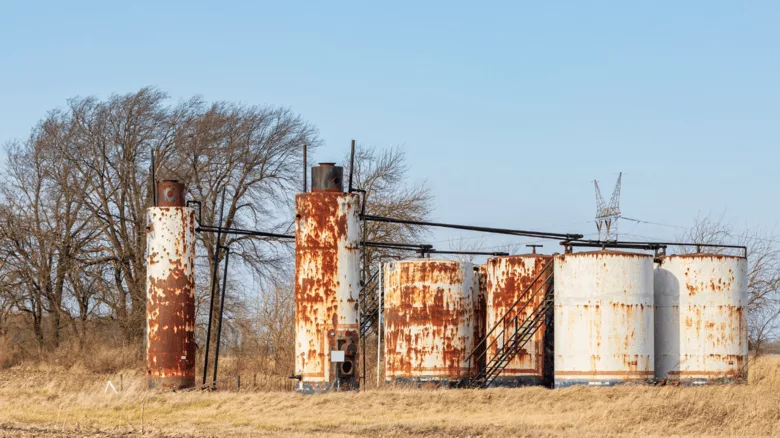Turning Abandoned Oil Wells into Clean Energy
There are hundreds of thousands of orphaned wells sitting dormant on United States land.

Image via JJ Gouin from Getty Images
According to a definition by the Pennsylvania Oil and Gas Act, an orphan well is defined as a well abandoned before April 18, 1985, that has not been operated or affected by the current owner or operator and has provided them no economic benefit beyond land ownership or royalty payments.
Unplugged wells pose significant risks to the environment, climate, and public health. Across the U.S., millions of people live near orphaned oil and gas wells. As of April 2022, research estimates there are 123,318 documented orphaned wells in the U.S. (see the map here). But this number only scratches the surface. Many more undocumented orphan wells, potentially hundreds of thousands to a million, are believed to exist nationwide.
The first big step in cleaning up these abandoned wells is figuring out exactly where they are and keeping track of them. That’s key to making sure federal funding from the Infrastructure Investment and Jobs Act goes to the right places. This law sets aside $4.7 billion to help plug and fix orphaned wells across federal, Tribal, state, and private lands.
Colorado
In Colorado, Gradient Geothermal is on a mission to turn old oil wells into a new source of clean energy. Geothermal energy has typically been pricey because of the cost of drilling deep into the earth. But by reusing existing wells, Gradient hopes to make it more affordable while providing reliable energy to local communities.
Drillers can tap into the hot water that still flows from these abandoned wells. Many of those wells are a former waste byproduct of oil production. Instead of discarding it, Gradient Geothermal plans to transfer the heat into a network of underground pipes that can circulate throughout the town, providing heating and cooling for homes, businesses, a local school, and even a meatpacking plant.
Louisiana
In Louisiana, legislation enacted in 2022 positions the state to secure about $200 million in federal grants for orphaned oil well remediation. Louisiana is home to approximately 4,600 abandoned oil and gas wells, many of which are leaking and harming the environment. Cleaning them up is expected to cost around $650 million.
Another initiative, The Orphan Wells Project, studies abandoned oil and gas wells across the country to get a better picture of their impact. Their goal is to gather data that helps determine which wells should be plugged first and explore ways to repurpose them. Since many of these wells were previously used for oil, they leak methane and risk contaminating the groundwater.
As states and companies look for innovative ways to transition to cleaner energy, projects like these could help turn environmental liabilities into valuable energy resources. A n acknowledgement of these abandoned sites will help drive long-term solutions for environmental restoration and energy transition efforts.
Looking for a reprint of this article?
From high-res PDFs to custom plaques, order your copy today!






